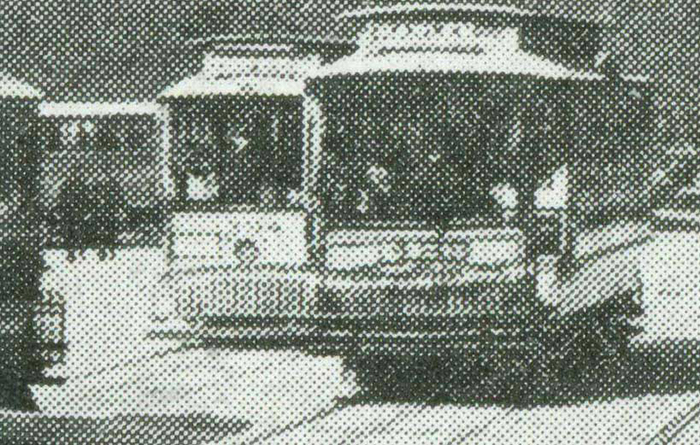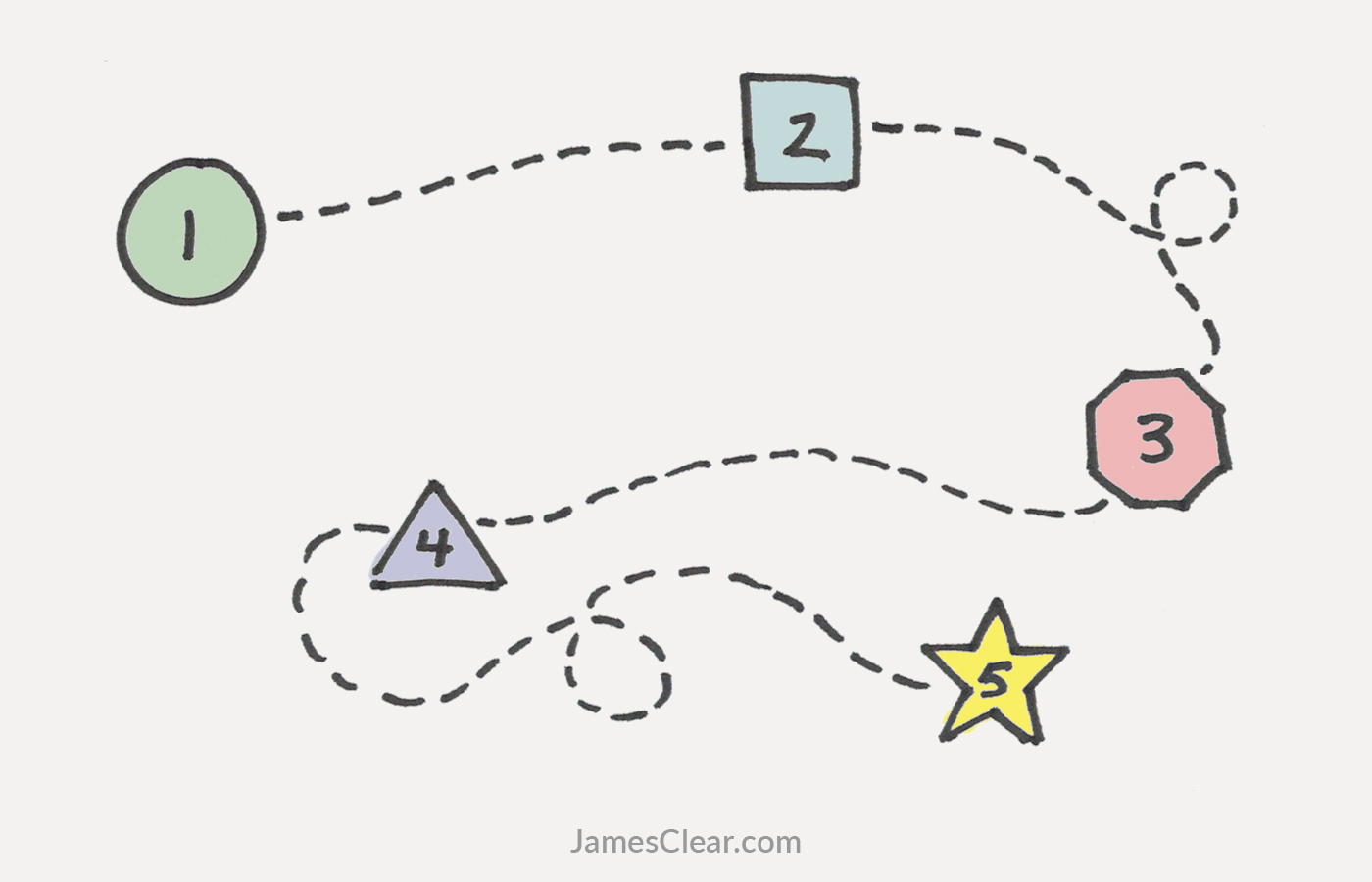How to Know if You Are Creative
About all great ideas follow a like creative process and this article explains how this process works. Understanding this is of import because creative thinking is one of the most useful skills you can possess. Nearly every trouble you face in piece of work and in life can do good from innovative solutions, lateral thinking, and artistic ideas.
Anyone can learn to exist creative past using these five steps. That's non to say being artistic is easy. Uncovering your creative genius requires courage and tons of practise. Even so, this five-step approach should assist demystify the creative process and illuminate the path to more than innovative thinking.
To explain how this process works, let me tell yous a short story.
A Problem in Need of a Creative Solution
In the 1870s, newspapers and printers faced a very specific and very costly problem. Photography was a new and exciting medium at the fourth dimension. Readers wanted to see more pictures, just nobody could figure out how to impress images quickly and cheaply.
For example, if a paper wanted to print an image in the 1870s, they had to committee an engraver to etch a copy of the photograph onto a steel plate by hand. These plates were used to press the image onto the page, but they often broke after just a few uses. This process of photoengraving, you tin imagine, was remarkably fourth dimension consuming and expensive.
The man who invented a solution to this problem was named Frederic Eugene Ives. He went on to become a trailblazer in the field of photography and held over 70 patents by the finish of his career. His story of creativity and innovation, which I will share now, is a useful example study for understanding the 5 cardinal steps of the creative procedure.
A Flash of Insight
Ives got his offset as a printer's apprentice in Ithaca, New York. After two years of learning the ins and outs of the printing process, he began managing the photographic laboratory at nearby Cornell University. He spent the rest of the decade experimenting with new photography techniques and learning almost cameras, printers, and optics.
In 1881, Ives had a flash of insight regarding a better printing technique.
"While operating my photostereotype process in Ithaca, I studied the problem of halftone process," Ives said. "I went to bed one night in a state of brain fog over the problem, and the instant I woke in the morning saw before me, apparently projected on the ceiling, the completely worked out process and equipment in operation." i
Ives speedily translated his vision into reality and patented his printing approach in 1881. He spent the remainder of the decade improving upon it. Past 1885, he had adult a simplified process that delivered even better results. The Ives Procedure, as it came to be known, reduced the cost of printing images past 15x and remained the standard press technique for the adjacent lxxx years.
Alright, now let's discuss what lessons we tin can learn from Ives about the creative process.

The 5 Stages of the Creative Process
In 1940, an advertisement executive named James Webb Young published a brusk guide titled, A Technique for Producing Ideas. In this guide, he made a simple, but profound argument about generating creative ideas.
According to Young, innovative ideas happen when you develop new combinations of old elements. In other words, artistic thinking is not about generating something new from a blank slate, but rather about taking what is already present and combining those bits and pieces in a way that has not been done previously.
Most important, the power to generate new combinations hinges upon your ability to see the relationships betwixt concepts. If yous can course a new link between 2 sometime ideas, yous have washed something creative.
Young believed this process of artistic connexion always occurred in 5 steps.
- Gather new material. At offset, you learn. During this stage you lot focus on one) learning specific material directly related to your chore and two) learning general fabric past becoming fascinated with a wide range of concepts.
- Thoroughly piece of work over the materials in your mind. During this stage, you examine what you have learned by looking at the facts from dissimilar angles and experimenting with fitting various ideas together.
- Step abroad from the problem. Next, you put the problem completely out of your mind and go do something else that excites you and energizes you lot.
- Let your thought return to you. At some point, but only afterwards you have stopped thinking about information technology, your idea will come dorsum to y'all with a flash of insight and renewed energy.
- Shape and develop your thought based on feedback. For any thought to succeed, you must release it out into the world, submit it to criticism, and adapt it every bit needed.

The Idea in Practice
The artistic procedure used by Frederic Eugene Ives offers a perfect instance of these v steps in activity.
Starting time, Ives gathered new fabric. He spent two years working as a printer'south apprentice and and so 4 years running the photographic laboratory at Cornell Academy. These experiences gave him a lot of material to draw upon and brand associations between photography and printing.
Second, Ives began to mentally piece of work over everything he learned. By 1878, Ives was spending near all of his time experimenting with new techniques. He was constantly tinkering and experimenting with dissimilar means of putting ideas together.
Third, Ives stepped away from the problem. In this instance, he went to sleep for a few hours before his flash of insight. Letting creative challenges sit for longer periods of time can piece of work also. Regardless of how long you pace away, you lot need to exercise something that interests yous and takes your heed off of the trouble.
Fourth, his thought returned to him. Ives awoke with the solution to his trouble laid out before him. (On a personal note, I often find artistic ideas hit me merely equally I am lying down for sleep. Once I requite my brain permission to stop working for the day, the solution appears easily.)
Finally, Ives continued to revise his idea for years. In fact, he improved then many aspects of the procedure he filed a 2d patent. This is a disquisitional signal and is often overlooked. It tin be easy to fall in love with the initial version of your idea, only great ideas always evolve.
The Artistic Process in Short
"An thought is a feat of association, and the height of it is a skilful metaphor."
—Robert Frost
The creative process is the human action of making new connections between sometime ideas. Thus, we can say artistic thinking is the task of recognizing relationships between concepts.
One way to arroyo creative challenges is by following the five-step process of i) gathering cloth, two) intensely working over the textile in your listen, 3) stepping away from the problem, 4) assuasive the thought to come back to you naturally, and 5) testing your idea in the existent world and adjusting it based on feedback.
Being creative isn't about being the first (or merely) person to think of an thought. More often, creativity is about connecting ideas.
huddlestonfacquale.blogspot.com
Source: https://jamesclear.com/five-step-creative-process
0 Response to "How to Know if You Are Creative"
Post a Comment